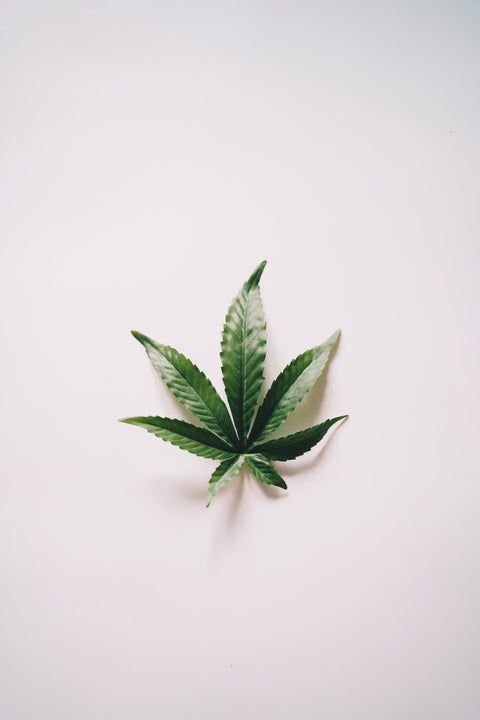
Fibromyalgia can be difficult to treat, but we have some good news—a microdose of cannabis may provide a measure of pain relief.
Microdosing cannabis has gained momentum as a potential supplemental therapy to help manage fibromyalgia symptoms and other chronic pain disorders. It involves very small, sub-psychoactive doses of cannabis that gently ease the pain without causing impairment or an intense “high.”
And our low-dose THC edibles may be the perfect solution.

What is fibromyalgia?
Fibromyalgia is a complex chronic condition that causes widespread pain and profound fatigue. It hits tender points all over the body, making simple tasks difficult and painful. It affects approximately 2–4% of the population and has a higher incidence in women.
Fibromyalgia belongs to a group of disorders called chronic pain syndromes, but it differs from traditional arthritis diseases because there is no inflammation or damage to the joints, muscles, or other tissues.
What are the symptoms of fibromyalgia?
Patients with fibromyalgia experience body-wide pain, particularly in the neck, shoulders, back, and hips. Pain is felt throughout the body in the muscles, ligaments, tendons, and other soft tissues. It has been described as a consistent dull ache or occasional burning sensation that waxes and wanes but never fully goes away.
But the symptoms don’t end with pain. Here’s a more elaborate list of the symptoms of fibromyalgia:
- Widespread pain.
- Tender points around the neck, shoulders, chest, lower back, hips, elbows, and knees that are sensitive to pressure. Even light touch can be perceived as painful.
- Chronic fatigue, even after a full night’s sleep.
- Difficulties with sleep, frequent waking, and poor sleep quality.
- Cognitive difficulties, often referred to as “fibro fog,” involve problems with memory, concentration, and thinking clearly.
- Mental health issues: anxiety, depression, and changes in mood.
What causes fibromyalgia?
The exact cause of fibromyalgia is still unknown. There are several factors that may contribute to its development.
- Genetics. Fibromyalgia may run in the family, suggesting that certain genetic mutations or family history could make you more susceptible to developing fibromyalgia.
- Physical trauma or infections. In some cases, physical trauma from injuries, surgeries, or infections might act as a trigger.
- Abnormal pain processing. People with fibromyalgia may process pain signals differently, amplifying the sensation of pain. Increased reactivity and improper functioning in pain processing centers of the brain may lead to the amplification of pain signals.
- Neurotransmitter imbalances. Fibromyalgia may arise due to the lower levels of certain chemical messengers called neurotransmitters that help regulate pain pathways.
- Stress and emotional trauma. Psychological stress, anxiety, and trauma may exacerbate or trigger symptoms of fibromyalgia.
- Sleep disturbances. Disruptions to normal sleep patterns can intensify pain and contribute to the development of fibromyalgia.
What is the best treatment for fibromyalgia?
Fibromyalgia continues to be a challenging chronic pain disorder to treat, with no magic bullet that works for everyone. Here are some treatments that alleviate fibromyalgia symptoms for some people:
- Prescription medications: antidepressants, anti-seizure drugs, pain relievers, low-dose naltrexone
- Nutritional supplements: magnesium, vitamin D, Sam-e, coenzyme Q10
- Light exercise: walking, swimming, tai chi, yoga, stretching, low-impact aerobics
- Physical therapy: manual therapy, ultrasound, TENS, dry needling
- Chiropractic adjustments and spinal manipulation
- Acupuncture
- Massage therapy
- Lifestyle changes: improved sleep habits, stress reduction, pacing activities
- Cannabis microdoses: small amounts of THC and CBD taken regularly
Healthcare professionals recommend an integrated treatment approach tailored to your needs. But more and more people have started resorting to microdosing cannabis edibles as an easy, healthy, and effective solution.
Microdoses of cannabis gently activate the body's endocannabinoid system (ECS), which helps regulate pain perception, sleep, and other vital processes. Small amounts of Delta-9-tetrahydrocannabinol (Delta 9 THC) and cannabidiol (CBD) may ease fibromyalgia pain, relax muscles, improve sleep quality, and boost mood.
Whether you’re struggling with neuropathy, sciatica, migraines, or cancer pain, microdosing cannabis may help.
How does cannabis alleviate pain?
Cannabis is a natural analgesic (a substance that reduces pain). A 2015 study showed that cannabis can be used to treat chronic pain conditions such as neuropathic pain and multiple sclerosis spasticity.
Another study suggests that “medicinal cannabis or cannabinoid-based medications relieve the burden of pain in chronic diseases such as fibromyalgia, multiple sclerosis, and even cancer.”
THC and CBD seem to relieve pain via their interactions with the endocannabinoid system.
The ECS is an essential biochemical network. The natural endocannabinoids our bodies produce interact with receptors to modulate a wide range of functions. Among other things, the versatile ECS regulates:
- Sleep
- Mood
- Appetite
- Inflammation
- Immune response
- Memory
- Motor control
- Pain perception
Cannabis compounds such as THC and CBD are phytocannabinoids (cannabinoids derived from plants, as opposed to produced in our bodies). They are chemically similar to endocannabinoids and interact with the ECS in the same way.
Delta 9 THC and CBD may come from the same plant, but their roles and functions in the ECS differ vastly. Both of these major cannabinoids have distinct ways in which they modulate and alleviate pain.
To learn more about these two, read all about the differences between CBD and THC.
How does THC alleviate pain?
THC docks to CB1 and CB2 in the ECS. It triggers anti-inflammatory and analgesic effects that help alleviate pain.
CB1 receptors are found abundantly in the brain and spinal cord. When THC activates them, pain-signaling neurotransmitters are released, decreasing the excitability of pain-conducting neurons. This modulation of neurotransmission dampens your pain perception and basically alters the way your body perceives pain. It's like flipping a switch that can decrease the sensation of pain.
Through CB1 receptors, THC also produces its euphoric effects.
…the psychotropic effects are mediated via brain cannabinoid type 1 (CB1) receptors, while analgesic activity in chronic pain states may be mediated via CB1R action in the spinal cord, brainstem, peripheral sensory neurons, or immune cells. (Milligan, et. al.)
THC’s signature high is partially caused by an increase in dopamine. Dopamine is an important neurotransmitter that regulates pleasure, motivation, and reward pathways in the brain. By interacting with CB1 receptors, THC stimulates the release of dopamine, amplifying pleasurable sensations, producing euphoric effects, and modulating pain.
Although dopamine has been known as a neurotransmitter to mediate reward and motivation, accumulating evidence has shown that dopamine systems in the brain are also involved in the central regulation of chronic pain. (Li, et. al.)
But don’t worry about impaired cognition, perception, or an intense high: microdosing THC gently nudges your ECS to produce a mild, pleasurable euphoria without psychoactive effects.
To further solidify its pain-relieving properties, THC stimulates CB2 receptors as well, which are distributed throughout the periphery of immune cells and tissues. This interaction can reduce inflammatory responses that contribute to many chronic pain conditions, making THC a potent anti-inflammatory agent. By acting on CB2 receptors, THC may also limit pain transmission signals.
Is THC better for pain when combined with CBD?
CBD and THC together seem to relieve pain better than either compound in isolation.
CBD influences the ECS differently than THC. It doesn't directly bind with the receptors but influences them indirectly. That’s why you’re unlikely to feel “high” when you consume CBD. Through the ECS, CBD lowers inflammation and modulates serotonin levels and other neurotransmitters related to pain management.
CBD produces anti-anxiety and pain-relieving effects not by interacting with cannabinoid receptors directly but by antagonizing or regulating the processes of CB1 and CB2 in the presence of THC.
When you take both compounds together, CBD regulates how THC interacts with the endocannabinoid system, more specifically, with CB1 and CB2 receptors. It assumes the role of a safety engineer to THC, increasing safety and softening the psychoactive and other adverse effects of THC (e.g., increased heart rate, sedation, and anxiety).
…CBD has little binding affinity for either CB1 or CB2 receptors, but it is capable of antagonizing them in the presence of THC. In fact, CBD behaves as a non-competitive negative allosteric modulator of CB1 receptor, and it reduces the efficacy and potency of THC… (Vučković, et. al.)
In other words, CBD antagonizes cannabinoid receptors in the presence of THC, lowering inflammation and decreasing the transmission of pain signals by influencing the activity of key neurotransmitters involved in pain.
All this evidence points to the so-called entourage effect, a proposed synergy between THC and CBD. In the entourage effect, compounds in cannabis work better together than in isolation. The entourage effect also allows lower, safer doses to be used as an effective treatment option for chronic pain conditions.
Check out our collection of full-spectrum CBD gummies and discover the soothing properties of the entourage effect for your fibromyalgia torments. We’re not saying our Energy gummies are our favorite way to combine tiny amounts of THC and CBD, but who can say no to these exotic blood orange-flavored treats?
But wait—the benefits of microdosing cannabis don’t stop there.

Product QUIZ
Need help deciding what product is best for you? Take our quiz, just three questions until your perfect match!
The benefits of microdosing edibles for fibromyalgia
Edibles are cannabis products that contain low doses of THC, CBD, and other compounds. You ingest them in the form of delicious gummies or THC drinks. These go through your digestive system, which is why they deliver longer-lasting effects.
All our edibles contain low doses of cannabis compounds, particularly Delta 9. Research shows that THC is better at alleviating chronic pain in smaller, controlled amounts, while higher THC levels can have detrimental effects.
While they won't cure fibromyalgia, cannabis edibles may ease symptoms and bring you much-needed relief. We’ve covered the analgesic properties of cannabis. Let’s see other mechanisms small amounts of THC and CBD employ to get rid of the symptoms of fibromyalgia.
Edibles help your muscles relax
Fibromyalgia often feels like your body is constantly clenching and coiling up. That’s because your muscles are in a protective spasm. Luckily, cannabis edibles may bring your muscles relief. People with multiple sclerosis take small amounts of cannabis to reduce muscle spasms due to cannabis’ “antispasmodic properties.”
THC and CBD have natural muscle relaxant properties. They help smooth out clenched muscle fibers and calm overactive motor neurons that trigger spasms. THC binds to CB1 receptors concentrated in the central nervous system. This decreases excessive neuronal activity telling your muscles to contract.
With your muscles able to decompress and loosen up, you'll gain back flexibility and freedom of movement. Best of all, you can avoid heavy sedatives and muscle relaxers. Pop one of our Bliss gummies and enjoy the optimal microdosing experience. The entourage effect will give you all the muscle tension relief without the high.
Edibles improve sleep
Tossing and turning through another restless fibro night? Relief may be an edible away. THC in microdoses can help you drift off more smoothly by activating CB1 receptors involved in sleep and wake patterns.
THC seems to increase the time spent in the critical rapid eye movement (REM) stage. This boosts the restorative properties of sleep so you awake feeling refreshed. According to research, THC may increase sleep latency (the time you need to fall asleep), while also promoting non-REM sleep stages. A 2016 study showed that the interaction between THC and CB1 receptors also stabilizes non-REM sleep by enhancing endocannabinoid signaling.
It’s not a magic solution to the pains and troubles you face with fibromyalgia, but microdosed edibles may offer a helpful reset for your sleep cycle. With improved sleep health, you’re better equipped to handle each day’s demands.
Don’t wait to develop more serious sleep conditions such as insomnia. Order our CBD gummies for sleep and start getting the restorative rest you need.
Edibles improve mood and reduce stress
Between the constant pain, fatigue, and poor sleep, fibromyalgia can really do a number on your mental health. But edibles are there for you and your mental health.
Tiny doses of THC provide a mild mood boost. Remember dopamine? By triggering dopamine release, you get a dose of natural pleasure which may help motivate you to engage in activities that enhance your wellbeing. In contrast, higher amounts of THC seem to have the opposite effect. According to a 2017 study, high THC exacerbates anxiety and paranoia.
Research found that CBD has a calming effect on the nervous system, calming worried thoughts and curbing obsessive rumination over pain. Cannabis edibles with THC and CBD banish anxiety by replacing all that stress with mild euphoria and sweet pain relief. With better sleep quality and pain relief, your overall stress levels go down too, leaving you with more capacity to focus on positive experiences.
Whether you’re seeking to relax or sleep better, our Relax Plus gummies are here for you. Expertly crafted for maximum chill with superior quality, each delicious gummy combines microdoses of CBD and THC to provide the ultimate sweet escape.
How much cannabis should I take for fibromyalgia?
There are no general dosage guidelines to follow here other than start low and go slow. Microdosing cannabis is exactly what it sounds like: you take controlled and safe amounts of cannabis to ease the pain, destress, sleep better, and feel better.
To relieve your fibromyalgia aches, start with 2 mg of THC per day. This dosage is strong enough to gently reduce your widespread musculoskeletal pain while keeping intense psychoactivity at bay. You’ll feel mildly uplifted and relaxed without impairment.
You need time to assess how you feel after two or three weeks of regular microdosing before you can make any adjustments to the dosage. Remember that high amounts of THC may lead to some adverse effects such as increased anxiety, sedation, and nausea. Find the right amount that works for you and your pain and stick to it.
We’re not doctors; we’re just sharing what works for us and many of our customers. We always recommend you consult your healthcare professional before you begin cannabis for your fibromyalgia.
Why are edibles the best way to consume cannabis?
Low THC and CBD levels are perfect if you suffer from chronic pain conditions such as fibromyalgia. Here’s why:
- Low-THC edibles are the safest method of consuming cannabis. It allows you to function completely normally while enjoying certain benefits in the background. With our low-dose THC edibles, you can experience mild euphoria and lots of therapeutic benefits for your muscles, gut, brain, and mental health.
- With edibles, you avoid the carcinogens and lung damage associated with smoking. You get precise doses of THC and CBD in every gummy, which ensures a slow release of cannabinoids into your system.
- All our cannabis edibles have been carefully crafted and tested in a third-party lab to ensure quality and safety. Our THC gummies contain high-quality ingredients and top-notch flavors that will turn your daily practice of microdosing into a delicious snack.
- Edibles with low THC levels provide longer-lasting effects. Gummies pass through your digestive system, leading to a slower onset of effects that can last for up to eight hours for some people.
When we say edibles, we’re not thinking just about the gummies. We have mentioned our THC-infused drinks that contain only 2.2 mg of THC per dropper. You can add a drop or two to your favorite lemonade, tonic water, or mocktail and bring out the fun and relief with every sip you take.
Learn how to create the best craft mocktails at home and infuse them with our liquid THC drops.
Check out our guide to the best THC microdosing products, where you can learn more about cannabis edibles with low amounts of THC.
Do you know where I can buy the best cannabis edibles?
There are many sources of cannabis edibles out there. Many of those involve fake, ineffective, and potentially dangerous products filled with chemicals, pesticides, toxins, and god knows what else. For real relief without the risks, turn to trusted brands that verify purity and potency.
If sublime gummies and drinks with uncompromising quality are your goal, choose nama. Our lab-tested edibles deliver measurable benefits you can trust, whether easing fibromyalgia or simply enjoying gourmet sweets. The low THC in our Buzz drops will elevate the mood faster than saying: a non-alcoholic cannabis margarita drink.
Learn how to infuse drinks with cannabis and enjoy every invigorating sip. Here’s where you can buy our world-class THC drinks.
Don't settle for mystery ingredients or exaggerated claims. Let rigorous testing and verifiable results guide you to the ideal edibles. Shop at nama and experience the difference quality makes.
See where you can buy the best hemp-derived gummies in the US.
Edibles FAQ
Should CBD also be used to microdose?
You can benefit from CBD's therapeutic potential, particularly for the treatment of spasticity and fibromyalgia-related symptoms. Small amounts of CBD are a great way of integrating medical cannabis into your daily life. CBD is known for its analgesic and anti-inflammatory properties and can be an effective cannabis therapy for managing routine pain without unwanted effects. CBD can help you reduce discomfort, lower inflammation, reduce stress associated with chronic pain, and even improve your sleep quality.
What is better for pain management: CBD or THC?
Both CBD and THC are great at relieving pain. Generally, CBD is preferred for its therapeutic effects, while THC's mildly psychoactive nature tends to be more suitable for acute pain.
For pain management, both CBD and THC offer unique benefits. CBD is hailed for its anti-inflammatory potential. It offers a calming, relaxing effect and doesn’t get you high even at higher doses. THC, known for its psychoactive properties when taken at sufficient doses, interacts directly with pain receptors, potentially delivering immediate relief.
We like to combine THC and CBD for the ultimate pain relief. Remember the entourage effect? It’s not a myth: the entourage effect is the real deal and a powerful way to kick your nerve pain to the curb, reduce stress, improve sleep, and so much more.
Order our entourage effect gummies and experience the natural relief.
Is sativa or indica better for reducing pain?
Both sativa and indica can manage pain. Indica is often associated with relaxing and calming effects. Sativa's energizing and uplifting qualities may help distract from pain or boost mood.
Research conducted by the University of California hints at the possibility that Indica strains provide better relief for phantom limb pain, while sativa might be more suitable for daily functioning. The answer to which cannabis strain is better for managing pain depends largely on your personal preference and the nature of your fibromyalgia.
Can cannabis be used as an antidepressant?
Cannabis shows promise in managing depression. Cannabinoids activate the endocannabinoid system to alleviate anxiety and depression symptoms, helping regulate mood and improve mental health.
A 2018 study found that adult cannabis users experienced a reduction in depressive symptoms following the use of recreational cannabis. Interestingly, those who received a mix of CBD and THC responded best.
Medical cannabis users perceived a 50% reduction in depression and a 58% reduction in anxiety and stress following cannabis use. Two puffs were sufficient to reduce ratings of depression and anxiety, while 10+ puffs produced the greatest perceived reductions in stress.
That’s why most of our Delta 9 edibles contain CBD and produce the therapeutic entourage effect to ease the pain and reduce depression.
What happens if I take too much weed?
If you consume an excessive amount of cannabis, particularly high in THC, you may experience some unwanted effects that impact daily activities and mental health. Excessive use may lead to:
- Increased anxiety
- Paranoia
- Hallucinations
- Increased heart rate
- Increased blood pressure
- Dry mouth
- Cannabis use disorder
The effects of high THC may not be fatal but try to stick to lower doses and avoid any unwanted side effects, especially for fibromyalgia-related symptoms.
Resources
Hill, K. P. (2015, June 23). Medical Marijuana for Treatment of Chronic Pain and Other Medical and Psychiatric Problems. JAMA; American Medical Association. https://doi.org/10.1001/jama.2015.6199
Anthony, A. T., Rahmat, S., Sangle, P., Sandhu, O., & Khan, S. (2020, September 14). Cannabinoid Receptors and Their Relationship With Chronic Pain: A Narrative Review. Cureus; Cureus, Inc. https://doi.org/10.7759/cureus.10436
Milligan, A. L., Szabo-Pardi, T. A., & Burton, M. D. (2019, October 9). Cannabinoid Receptor Type 1 and Its Role as an Analgesic: An Opioid Alternative? Journal of Dual Diagnosis; Taylor & Francis. https://doi.org/10.1080/15504263.2019.1668100
Li, C., Liu, S., Lu, X., & Tao, F. (2019, November 12). Role of Descending Dopaminergic Pathways in Pain Modulation. Current Neuropharmacology; Bentham Science Publishers. https://doi.org/10.2174/1570159x17666190430102531
Vučković, S., Srebro, D., Vujović, K. S., Vučetić, E., & Prostran, M. (2018, November 13). Cannabinoids and Pain: New Insights From Old Molecules. Frontiers in Pharmacology; Frontiers Media. https://doi.org/10.3389/fphar.2018.01259
Almog, S., Aharon‐Peretz, J., Vulfsons, S., Ogintz, M., Abalia, H., Lupo, T., Hayon, Y., & Eisenberg, E. (2020, June 12). The pharmacokinetics, efficacy, and safety of a novel selective‐dose cannabis inhaler in patients with chronic pain: A randomized, double‐blinded, placebo‐controlled trial. European Journal of Pain, 24(8), 1505–1516. https://doi.org/10.1002/ejp.1605
Mack, A. (2000). MARIJUANA AND MUSCLE SPASTICITY. Marijuana as Medicine? - NCBI Bookshelf. https://www.ncbi.nlm.nih.gov/books/NBK224382/
Babson, K. A., Sottile, J. E., & Morabito, D. M. (2017, March 27). Cannabis, Cannabinoids, and Sleep: a Review of the Literature. Current Psychiatry Reports; Springer Science+Business Media. https://doi.org/10.1007/s11920-017-0775-9
Pava, M. J., Makriyannis, A., & Lovinger, D. M. (2016, March 31). Endocannabinoid Signaling Regulates Sleep Stability. PLOS ONE; Public Library of Science. https://doi.org/10.1371/journal.pone.0152473
Stoner SA. Effects of Marijuana on Mental Health: Anxiety Disorders. Alcohol & Drug Abuse Institute, University of Washington, June 2017. URL: http://adai.uw.edu/pubs/pdf/2017mjanxiety.pdf
Shannon, S., Lewis, N., Lee, H., & Hughes, S. (2019, March 1). Cannabidiol in Anxiety and Sleep: A Large Case Series. The Permanente Journal; The Permanente Press. https://doi.org/10.7812/tpp/18-041
nama CBD FDA & legal disclaimer
Our products are not intended to diagnose, treat, cure, or prevent any disease. They are not a replacement for prescription medications and have not been evaluated by the Food and Drug Administration (FDA).
The information provided on this website does not and is not intended to, constitute legal advice or any statements of the status of any laws. Any information, content, and materials available on this site are for general informational purposes only and are not intended to be relied upon for any purpose.
Readers of this website should contact their attorney to obtain advice with respect to any particular legal matter including decisions on what products are, or are not, legal to sell, possess, or consume. No reader, user, or browser of this site should act or refrain from acting on the basis of information on this site without first seeking legal advice from their own counsel in the relevant jurisdiction.
Only your individual attorney can provide assurances that the information contained herein – and your interpretation of it – is applicable or accurate for your particular situation. Use of, and access to, this website or any of the links or resources contained within the site do not create an attorney-client relationship between the reader, user, or browser, and website authors, contributors, contributing law firms, or committee members and their respective employers.

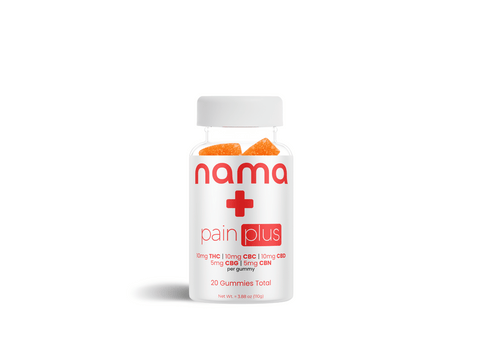

![Euphoria Black Raspberry [10ct]](http://www.namacbd.com/cdn/shop/files/nama_black_raspberry_pouch.png?v=1715285306&width=480)
![Euphoria Black Raspberry [10ct]](http://www.namacbd.com/cdn/shop/files/nama_black_raspberry_nutrition_label.png?v=1715285313&width=480)
![Euphoria Kiwi Raspberry [10ct]](http://www.namacbd.com/cdn/shop/files/nama_kiwi_raspberry_pouch.png?v=1715285056&width=480)
![Euphoria Kiwi Raspberry [10ct]](http://www.namacbd.com/cdn/shop/files/nama_euphoria_kiwiraspberry_nutrition_facts.jpg?v=1715873960&width=480)
![Euphoria Triple Berry [10ct]](http://www.namacbd.com/cdn/shop/files/nama_euphoria_triple_berry_pouch.png?v=1715286095&width=480)
![Euphoria Triple Berry [10ct]](http://www.namacbd.com/cdn/shop/files/nama_euphoria_tripleberry_nutrition_facts.jpg?v=1715873950&width=480)

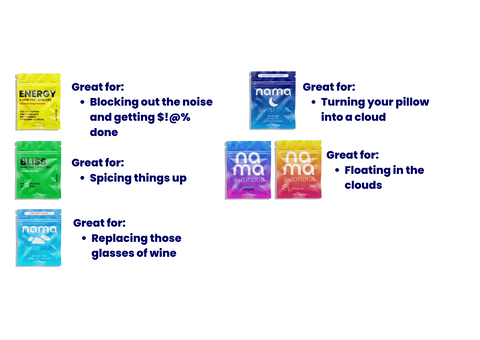
![Buzz Drops™ [THC Drink Drops]](http://www.namacbd.com/cdn/shop/files/nama_thc_buzz_drops.png?v=1711412866&width=480)
![Buzz Drops™ [THC Drink Drops]](http://www.namacbd.com/cdn/shop/files/buzz-drop-wine-comparison.png?v=1736882023&width=480)
![Buzz Packs™ [THC and CBD Powder Drink Mix]](http://www.namacbd.com/cdn/shop/files/nama_buzz_packs_thc_drink_pack_white_background.png?v=1741884660&width=480)
![Buzz Packs™ [THC and CBD Powder Drink Mix]](http://www.namacbd.com/cdn/shop/files/Buzz_Packs_Label.png?v=1741884660&width=480)
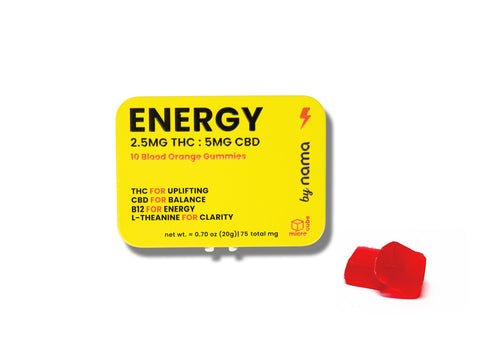



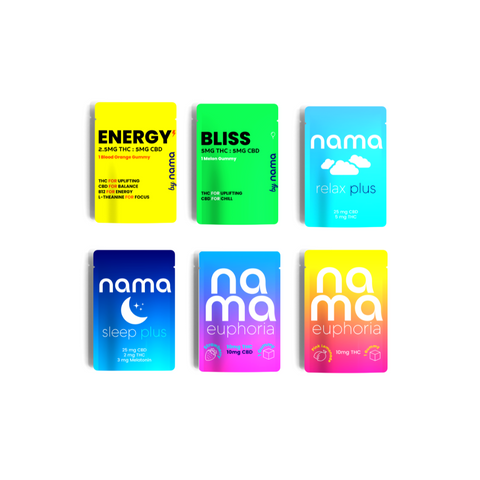











Comments (0)
There are no comments for this article. Be the first one to leave a message!